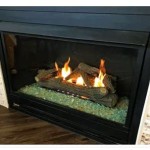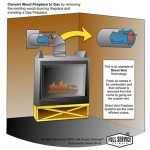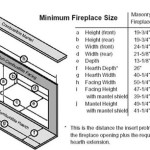```html
Wolf Steel Fireplace Inserts: A Comprehensive Overview
Wolf Steel, known primarily for its Napoleon brand of fireplaces, offers a diverse range of fireplace inserts designed to enhance the efficiency and aesthetics of existing fireplaces. These inserts provide a modern alternative to traditional open hearth fireplaces, offering improved heating capabilities, reduced emissions, and enhanced design options. Understanding the various aspects of Wolf Steel fireplace inserts is essential for homeowners seeking to upgrade their fireplace system.
Fireplace inserts are self-contained heating appliances designed to be installed directly into an existing fireplace opening. They function as a closed combustion system, significantly improving heating efficiency compared to open fireplaces, which typically lose a substantial amount of heat up the chimney. Wolf Steel’s inserts are available in various fuel types, including gas, wood, and electric, allowing homeowners to select the option that best suits their needs and preferences. Each fuel type offers distinct advantages and considerations regarding installation, maintenance, and operational costs.
Key Point 1: Fuel Types and Heating Efficiency
Wolf Steel offers fireplace inserts that operate on three primary fuel types: gas (natural gas and propane), wood, and electricity. Each type provides a unique set of benefits and drawbacks that influence the homeowner's decision. Heating efficiency is a crucial factor to consider when selecting a fireplace insert, as it directly impacts heating costs and environmental impact.
Gas Fireplace Inserts: These inserts offer convenience and ease of use. They typically feature thermostatic controls, allowing homeowners to maintain a consistent room temperature. Gas inserts are known for their clean burning characteristics, producing fewer emissions than wood-burning alternatives. They are available in both natural gas and propane models, providing flexibility depending on the homeowner's access to fuel sources. The efficiency of gas inserts is generally high, often exceeding 70%, meaning a significant percentage of the fuel's energy is converted into usable heat.
Wood Fireplace Inserts: For homeowners who appreciate the ambiance and tradition of a wood-burning fire, wood fireplace inserts offer a more efficient and controlled heating experience. Modern wood inserts are designed with advanced combustion technology, reducing emissions and increasing heating efficiency. These inserts often feature air wash systems to keep the glass door clean, allowing for a clear view of the fire. While wood inserts require more manual operation, including loading wood and cleaning ash, they can provide a substantial amount of heat and are often preferred for their aesthetic appeal. The efficiency of modern wood inserts can range from 60% to over 80%, depending on the model and design.
Electric Fireplace Inserts: Electric fireplace inserts provide a convenient and versatile heating option. They require no venting or fuel lines, making them easy to install in various locations. Electric inserts use electric resistance heating to generate warmth and often feature realistic flame effects to mimic the appearance of a traditional fire. While electric inserts are not as efficient as gas or wood inserts in terms of converting fuel into heat, they are cost-effective for supplemental heating and provide a safe and clean heating option. They offer adjustable heat settings and can be operated with or without the heat function, allowing homeowners to enjoy the ambiance of the flame effect year-round.
Key Point 2: Installation Considerations
Proper installation is crucial for the safe and efficient operation of any fireplace insert. It is strongly recommended that installation be performed by a qualified and certified technician to ensure compliance with local building codes and manufacturer specifications. The installation process varies depending on the fuel type and specific model of the insert. Several factors must be considered before and during the installation process.
Venting Requirements: Gas and wood fireplace inserts require venting systems to safely exhaust combustion byproducts. Gas inserts typically utilize direct vent or B-vent systems, depending on the model and installation requirements. Direct vent systems draw combustion air from outside and exhaust directly outside, providing a sealed combustion environment. Wood inserts require a chimney liner to ensure proper draft and prevent creosote buildup. The existing chimney must be inspected and, if necessary, relined with a stainless steel liner to meet current safety standards. Electric inserts, as mentioned previously, require no venting as they produce no combustion byproducts.
Fireplace Opening Dimensions: Before purchasing a fireplace insert, it is essential to measure the dimensions of the existing fireplace opening to ensure a proper fit. The insert must be sized appropriately to fit within the opening while allowing for adequate clearance for ventilation and access for maintenance. Wolf Steel provides detailed specifications for each of its inserts, including the required fireplace opening dimensions.
Gas Line and Electrical Connections: Gas inserts require a gas line connection, which must be installed by a qualified gas fitter according to local codes. Electrical connections are necessary for both gas and electric inserts to power the blower, controls, and flame effects. These connections must be made by a licensed electrician to ensure safety and compliance. Wood inserts may also require an electrical connection for the blower motor and other features.
Permits and Inspections: Depending on local regulations, a building permit may be required for the installation of a fireplace insert. It is the homeowner's responsibility to obtain the necessary permits and schedule inspections to ensure that the installation meets all applicable codes and safety standards. Failure to obtain proper permits can result in fines and require the removal and reinstallation of the insert.
Key Point 3: Maintenance and Safety
Regular maintenance is essential to ensure the long-term performance and safety of a fireplace insert. Different fuel types require different maintenance procedures. Neglecting maintenance can lead to reduced efficiency, increased emissions, and potential safety hazards.
Gas Fireplace Insert Maintenance: Gas inserts should be inspected annually by a qualified technician. This inspection should include cleaning the burner assembly, checking the venting system for blockages, and inspecting the gas connections for leaks. The pilot light and thermostatic controls should also be tested to ensure proper operation. Regular cleaning of the glass door will maintain a clear view of the flames. It is important to follow the manufacturer's recommendations for cleaning and maintenance procedures.
Wood Fireplace Insert Maintenance: Wood inserts require more frequent maintenance than gas inserts. The chimney should be inspected and cleaned annually by a certified chimney sweep to remove creosote buildup, which can pose a fire hazard. The ash should be removed regularly to maintain proper airflow and combustion. The door gasket should be inspected and replaced as needed to ensure a tight seal. Regular cleaning of the glass door is also necessary to maintain visibility.
Electric Fireplace Insert Maintenance: Electric inserts generally require minimal maintenance. The unit should be cleaned periodically to remove dust and debris. The flame effect components may need to be replaced over time. It is important to follow the manufacturer's recommendations for cleaning and maintenance.
Safety Considerations: Regardless of the fuel type, several safety considerations apply to all fireplace inserts. Carbon monoxide detectors should be installed in the home to alert occupants to the presence of this odorless and colorless gas. Smoke detectors should also be installed and regularly tested. Never leave a burning fireplace unattended. Keep flammable materials away from the fireplace insert. Children and pets should be supervised around the fireplace to prevent burns or other injuries. Always follow the manufacturer's instructions for safe operation and maintenance.
Beyond these core aspects, Wolf Steel offers a range of features and design options to customize their fireplace inserts. These include various door styles, trim kits, and firebox liners to enhance the aesthetic appeal of the insert. Some models also feature remote controls, programmable thermostats, and variable speed blowers to improve convenience and control. Detailed information regarding specific models and features can be found on the Wolf Steel website or through authorized dealers. Choosing the right fireplace insert involves carefully considering individual needs, budget constraints, and aesthetic preferences.
```
Gas Fireplaces Fireplace Series Napoleon

S25i Napoleon

Wolf Steel 57276 Giztrm4 4 Sided Painted Textured Black Trim Kit Com

Napoleon Oakdale Deluxe 1101 Wood Fireplace Insert At Obadiah S

Timberwolf Wood Pellet Stoves Inserts Quality Biomass Heating

Gas Fireplace Inserts Napoleon Fireplaces

Timberwolf Wood Pellet Stoves Inserts Quality Biomass Heating

T25i Timberwolf Wood Fireplace Insert Hearth Stove Patio

Fireplaceinsert Com Napoleon Epi3t Epi3c Fireplace Insert Oakdale

Timberwolf Epi22 Wood Fireplace Insert Rockford Chimney
Related Posts








